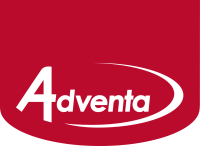We use cookies to make your experience better. To comply with the new e-Privacy directive, we need to ask for your consent to set the cookies. Learn more.
What is Lithography & How Does it Work?
What is Lithography & How Does it Work?
Lithography is one of the most well-known, time-honoured methods of printing. Used for a broad range of printing needs, this medium produces clean, interesting prints and is very popular for these reasons, amongst others.
In this post, Adventa defines lithography and how it works. We will also explore the history of lithography and look at alternative printing methods and how they compare to lithographic prints. Keep reading to find out everything you need to know about lithography.
What is Lithography?
Lithography is a method of printing that is ideal for long printing runs. Often used to print packaging, books, posters, magazines and more, this medium is well suited to a wide range of applications.
The word ‘lithography’ is derived from the Greek words lithos, which means ‘stone’ and graphein, meaning ‘to write’. As the lithographic process originally involved scoring a flat stone with a pencil, this name is perfectly expressive of the method.
Lithography History
Lithography has a fascinating history. This method of printing was invented in 1796 by a German author and actor, Alois Senefelder. Senefelder accidentally discovered this printing method. He found that he could reproduce his play scripts by writing them on slabs of limestone with a greasy pencil and then printing them onto another medium with rolled-on ink.
With that, the lithograph technique was born. It was mainly used for musical scores and maps at that point before more uses were discovered and developed.
How Does Lithography Work?
Lithography is a planographic printing method based on the fact that oil and water cannot mix, which is called immiscibility. A special type of pencil is used to write or draw on a stone or metal plate with a smooth surface. The surface is treated to repel the ink where it has not been scored by the pencil. Ink is then rolled onto the surface and either transferred onto a rubber plate first or directly printed onto paper or alternative material. The rubber plate (or blanket) is generally used for printing on material that is not completely flat and smooth.
What Are The Alternatives To Lithography?
There are a number of different printing methods available, and each method suits different applications best. The common alternatives to lithography are:
- Digital Printing
- Flexography
- Screen Printing
- LED UV Printing
How Does Lithography Compare To Other Printing Approaches?
As mentioned above, different types of printing methods suit different applications. Below we explore how lithography compares to other common printing methods.
Digital Printing vs Litho Printing
Simply, lithographic printing uses wet ink and printing plates, and digital printing uses inks and a press similar to a large office printer. Lithography requires more money and time to set up but is very affordable to run from then on, so it is generally used for longer runs. Digital printing, on the other hand, is most convenient for shorter runs, as it is cheaper to set up. However, the unit price becomes more expensive when compared to lithography’s long runs.
Flexo Printing vs Lithography
Flexographic printing is a printing technique that uses flexible relief plates. The plates act like a large stamp, transferring images onto boards. Flexo printing differs from litho printing primarily in the quality of the print. Litho printing is better for full-colour printing and can accommodate more detailed patterns and finish options.
Screen Printing vs Lithographic Printing
Screen printing, also called silk screening, involves transferring ink through a fine mesh screen onto the substrate. The ink, or dye, is applied in specific locations on the garment or alternative material, as some areas are made impermeable to the ink with a blocking stencil. In the past, silk screens were used.
Screen printing is a slower and more expensive process than lithography. In addition to this, litho printing results in more defined, detailed prints than silk screening.
LED UV Printing Vs Litho Printing
LED UV printing is similar to other methods, but with this option, ED-UV inks are dried (cured) instantly using UV light. With LED UV printing, ink set-off is eliminated, making this an extremely clean printing method. This printing method is more expensive than lithography and requires more materials, but it works excellently for large runs, and the immediacy can be very beneficial.
We are experts in printing and manufacturing. If you’d like to get more of a handle on what we do and how we do it, get in touch.

